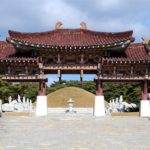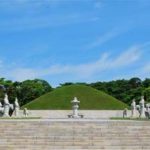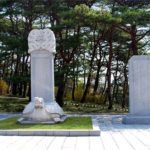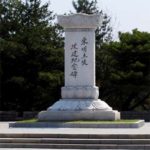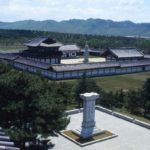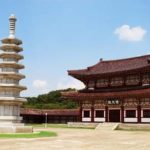It stands in Ryongsan-ri of Ryokpho Distirct, 25 km away from the centre of Pyongyang.
It is the tomb of King Tongmyong (His original name is Kojumong), founder-king of Koguryo (277 B.C. – A.D.668), the first feudal state and the strongest in the history of Korea. It was moved to the present location in 427 when Koguryo moved its capital to Pyongyang, according to the manners of respecting their founder-king.
The present mausoleum was renovated true to the principle of fidelity to historical truth in May Juche82 (1993) on the occasion of the king’s 2 291st birth anniversary.
Covering an area of over 170 hectares, it is divided into three sections: the king’s mausoleum, Jongnung Temple and servants’ tombs.
The section of the mausoleum consists of a gate built in the Korean architectural style, the mausoleum, stone sculptures of civilian officials and military officers and other sculptures, tombstones and a shrine for memorial service.
There were a large number of valuable remains in the chamber of the mausoleum, but they were plundered by the Japanese imperialists during their military rule of Korea.
Seen on the walls in the chamber of the grave are mosaics depicting lotus flowers.
Jongnung Temple was built when moving the mausoleum in a bid to pray for the soul of King Tongmyong. It is a large temple covering an area of 37 000 square meters. It is surrounded by corridors 223 m long from west to east and 133 m long from north to south.
In the section of the subjects’ tombs are 15 tombs of the king’s loyal subjects who contributed to the founding of Koguryo.
The mausoleum of King Tongmyong was registered as a World Cultural Heritage of the UNESCO in Juche93 (2004).

